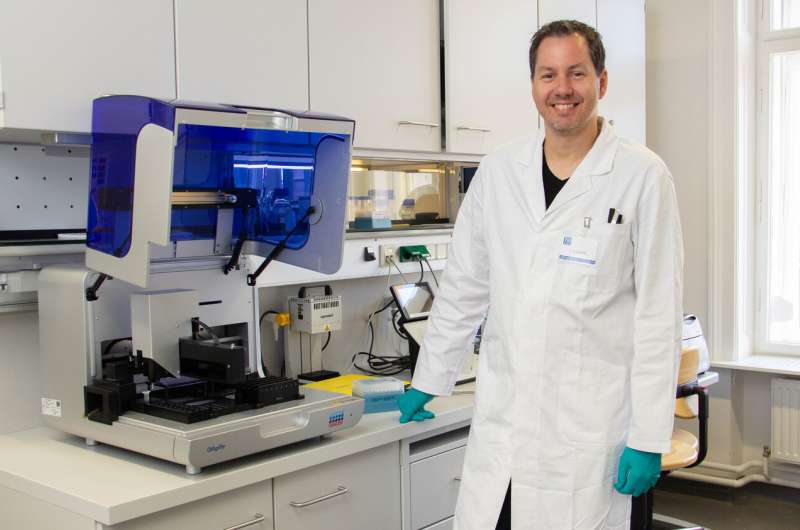Evolution in the gut

Evolution and dietary habits interact and determine the composition of bacteria in the digestive tract. Many microorganisms in the intestine seem to have developed in sync with their host animals over millions of years.
People carry about 10 times as many bacteria and archaea as our own cells. The bacterial ecosystem in our digestive tract, the so-called microbiome, is not only of great importance for our metabolism, but also for the immune system and even our behaviour. The same is true to animals, but the composition of the microbiome differs greatly between animal species.
For the first time, a large-scale study was carried out to explain the development of the microbiome using faecal samples from free-living animals. 128 species from multiple classes of fish, amphibians, reptiles, birds and mammals were examined. The research groups involved were able to show how evolution and dietary habits interact and determine the composition of bacteria in the digestive tract. Many microorganisms in the intestine seem to have developed in sync with their host animals over millions of years. These results should also help in the characterisation of faecal pollution in water by allowing attribution to certain animal species in a much more precise way in the future.
Samples from all branches of the family tree
"So far, there have been studies on the microbiome of humans, or special data for individual species such as rats. However, we wanted to select many animal species that were as representative as possible of the entire evolutionary tree of vertebrates—from birds to mammals to fish," says Prof. Andreas Farnleitner, Co-Leader of the Interuniversity Research Centre "Water and Health" at the TU Wien (ICC Water & Health, http://www.waterandhealth.at) and Professor of Microbiological Diagnostics in extension of the ICC Water & Health group at Karl Landsteiner Private University in Krems.
It was important to get samples from wild animals, as zoo animals can have a completely different microbiome than their wild counterparts. The Institute for Wildlife Science and Ecology of the University of Veterinary Medicine Vienna was the lead partner for the sample collection. The DNA of the microorganisms studied was then sequenced—partly at the TU Wien and partly at the Max Planck Institute for Developmental Biology in Tübingen.
"A total of more than 400 samples from 180 different species were analysed, resulting in 20 million gene sequences," said Dr. Georg Reischer (TU Vienna). The cooperation partners of the MPI in Tübingen contributed their know-how in bioinformatic data analysis and evolutionary biology to the study. This revealed striking relationships that can be explained by evolutionary history: The microbiome has developed over many millions of years in co-evolution with the host animals. Closely related species also have similarities in the microbiome. "Nutrition also plays a role, but it is never the only decisive factor," explains Georg Reischer. "If a mammal eats the same food as a bird, it still does not have the same bacteria in its intestines."
The contamination bio-detector
The data collected in this study not only allows the interpretation of the co-evolution of host animals and the microorganisms in their digestive tracts, it also facilitates the development of methods to assist in the provision of clean water. In recent years, technology has been developed at the TU Wien that uses DNA tests to provide information on the source of fecal pollution in water. Thus, it became possible to find out whether the contamination was caused by human wastewater or grazing animals. "Now, we have a very extensive data set at our disposal that will make such tests possible in a much more comprehensive and accurate way," says Andreas Farnleitner.
More information: Nicholas D. Youngblut et al, Host diet and evolutionary history explain different aspects of gut microbiome diversity among vertebrate clades, Nature Communications (2019). DOI: 10.1038/s41467-019-10191-3
Journal information: Nature Communications
Provided by Vienna University of Technology
















